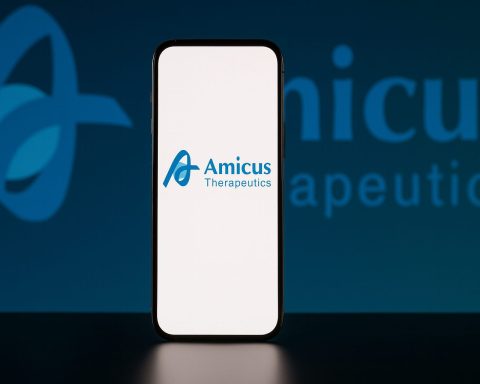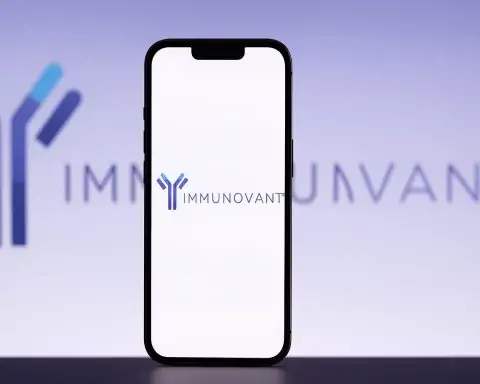Breakthroughs in Biotech & Pharma
- First Treatment for Bronchiectasis: The FDA has approved brensocatib (brand name Brinsupri) as the first and only therapy for non-cystic fibrosis bronchiectasis, a chronic lung disease affecting ~500,000 U.S. patients [1]. Brensocatib is a first-in-class DPP1 inhibitor that targets neutrophil-driven inflammation. Experts heralded the approval as a “potential paradigm shift” in bronchiectasis care, since “for the first time, we have a treatment that directly targets neutrophilic inflammation”, offering a long-awaited option to manage this progressive respiratory condition [2].
- Novartis’ Autoimmune Trial Hat-Trick:Novartis announced a trio of Phase 3 victories for its antibody drug ianalumab across multiple autoimmune diseases [3] [4]. In Sjögren’s syndrome, ianalumab became the first therapy to significantly reduce disease activity in global Phase 3 trials [5]. Just a day later, Novartis reported that ianalumab also hit the primary endpoint in immune thrombocytopenia (ITP), when added to standard care, by prolonging the time to treatment failure (i.e. maintaining safe platelet counts) [6]. The B-cell–targeting antibody is given as only four monthly doses, a short-course approach that could offer long-term disease control and extended treatment-free periods for patients [7]. “These positive topline results… highlight the potential of ianalumab, if approved, to deliver long-term disease control with four once-monthly doses and enable extended time off treatment,” said Novartis CMO Dr. Shreeram Aradhye [8].
- Other R&D Highlights: Not all late-stage trials succeeded – Biohaven disclosed that its experimental OCD drug troriluzole failed to show benefit in a Phase 3 study, prompting the company to halt that program [9]. Meanwhile, the US government’s new health research agency ARPA-H made waves in science policy circles: its head of data resigned after ARPA-H controversially canceled a series of mRNA vaccine projects, a move that NIH’s leadership partly attributed to public distrust and politicization around vaccines [10].
Big Deals and Industry Moves
- Cardinal’s $1.9B Urology Bet: U.S. healthcare giant Cardinal Health is acquiring Solaris Health – the nation’s largest urology practice management network – for $1.9 billion in cash [11]. Solaris will be folded into Cardinal’s “Specialty Alliance” physician network, expanding its reach in specialty care. Cardinal’s CEO Jason Hollar said the deal aligns with a strategic focus on specialty medicine growth, calling urology “an attractive specialty for us” and highlighting the combined capabilities it will bring to community urologists [12]. The acquisition, expected to close by year-end, will see Solaris’ leadership transition into advisory roles at Cardinal [13].
- Bayer’s $1.3B KRAS Cancer Collaboration:Bayer struck a major partnership with California biotech Kumquat Biosciences, committing up to $1.3 billion for rights to an experimental cancer drug targeting the KRAS G12D mutation [14]. KRAS mutations drive many hard-to-treat cancers (G12D occurs in ~38% of pancreatic cancers) which long seemed “undruggable” [15]. With recent breakthroughs against KRAS G12C, Bayer is joining the race to target G12D. Kumquat’s KRAS<sup>G12D</sup> inhibitor just cleared FDA to begin human trials, slightly trailing rival programs, but Bayer’s hefty deal underscores the high stakes in this next wave of oncology R&D [16].
- New Lung Disease Biotech Launch: Boston-based PureTech Health has spun out a new startup called Celea Therapeutics to advance a novel treatment for idiopathic pulmonary fibrosis (IPF) [17]. The drug, deupirfenidone (LYT-100), is a chemically enhanced version of pirfenidone (an existing IPF therapy) designed to be more effective and tolerable. In a Phase 2b trial, deupirfenidone significantly slowed lung function decline over 26 weeks, with “improved efficacy and similar to slightly better tolerability” compared to pirfenidone [18]. Celea will meet with the FDA this quarter to plan a Phase 3 trial, and is led by former Teva North America CEO Sven Dethlefs [19].
- Investor Pressure on Life Science Supplier:Avantor, a major lab supplies and bioprocessing company, is under activist investor scrutiny. Engine Capital disclosed a 3% stake and urged Avantor to cut costs, boost margins, and even consider selling itself after its stock plunged ~50% this year [20]. The push comes just as Avantor installs a new CEO (Emmanuel Ligner, formerly of Cytiva) to execute a turnaround. In a public letter, Engine Capital argued Avantor has “self-inflicted organizational dysfunction” and should emulate more disciplined peers, pressuring management to improve performance or explore a sale [21] [22].
Regulatory & Health Policy Updates
- China Tightens Outbreak Alerts: In the wake of pandemic lessons, China issued new regulations on infectious disease outbreak warnings (on a trial basis) [23]. The rules, released Aug 12 by the National Disease Control and Prevention Administration, aim to standardize how authorities identify and respond to emerging health threats. They mandate early warning systems for notifiable diseases, novel pathogens, unexplained illnesses, and other high-risk infections [24]. Under the framework, disease control agencies at all levels must collect surveillance data, assess risks, and classify outbreak threats into a four-tier alert system [25] – with detailed criteria for each tier forthcoming. The policy is intended to flag potential outbreaks faster and trigger preemptive measures to protect public health [26] [27].
- Condemnation of Violence Against Health Officials: In the United States, public health leaders are rallying after a violent incident at CDC headquarters in Atlanta. Last week an armed attack at the CDC campus tragically left a police officer dead, damaged facilities, and traumatized staff [28]. On Aug 12, the National Association of County and City Health Officials (NACCHO) issued a statement supporting CDC personnel and “condemning acts of violence against public health” [29]. NACCHO noted this attack as a stark consequence of the “false rhetoric” and vilification that public health workers have faced [30]. Such threats have surged during the pandemic and aftermath, with many officials facing harassment for performing their duties. NACCHO and others are urging greater protections for the public health workforce, warning that hateful rhetoric has “very real consequences” and must be stopped [31] [32].
Public Health Developments
- Legionnaires’ Disease in New York City: A Legionnaires’ disease outbreak in Harlem, NYC has grown to 90 confirmed cases, including 3 deaths, as of Aug 12 [33]. NYC health officials have identified a cluster of the severe pneumonia-like illness in central Harlem neighborhoods, where 15 people remained hospitalized. Investigators suspect local cooling towers (water systems) as the source and have ordered disinfection of any that tested positive for Legionella bacteria [34]. Legionnaires’ is not spread person-to-person but via inhalation of contaminated water mist. Residents in the area have been alerted to seek care for flu-like symptoms (cough, fever, chills, shortness of breath) because prompt antibiotic treatment can be lifesaving [35] [36]. City agencies are monitoring the situation closely and report that the risk to most people remains low [37] [38].
- Large Measles Outbreak in Texas: Texas is battling one of the largest U.S. measles outbreaks in decades, with 762 cases confirmed across 19 counties since the start of 2025 [39]. The Texas Department of State Health Services reported on Aug 12 that the outbreak, centered in the West Texas region, has led to 99 hospitalizations and two child deaths so far [40]. The fatalities were unvaccinated school-aged children with no underlying conditions [41]. Only a handful of the cases are still infectious, as measles cases eventually recover or isolate. Officials have designated Lamar County as an ongoing transmission hotspot and are urging immunization: two doses of MMR vaccine provide high protection against measles [42]. Public health teams are conducting contact tracing and weekly updates are being posted each Tuesday [43] [44]. The outbreak underscores the consequences of declining vaccination rates and has prompted renewed vaccination campaigns in Texas [45] [46].
- Tropical Virus Outbreak in China: The U.S. CDC issued a travel advisory after a chikungunya outbreak in southern China surpassed 7,000 cases [47]. The mosquito-borne virus has been spreading rapidly in Guangdong Province since June, fueled by heavy monsoon rains and flooding that created mosquito breeding grounds [48]. Chikungunya causes fever and intense joint pain; while rarely fatal, it can be extremely debilitating. In response to the outbreak, Chinese authorities have intensified mosquito control (spraying insecticide in affected areas) [49]. Travelers to Guangdong are urged to take precautions like wearing long sleeves, using DEET insect repellent, and sleeping under bed nets [50]. Notably, vaccines for chikungunya do exist – the CDC is recommending vaccination for travelers headed to outbreak zones [51]. Health experts point out that climate change is expanding the range of Aedes mosquitoes that transmit chikungunya; globally, about 240,000 cases have been reported in 2025, and new regions (like parts of China) are now at risk [52] [53].
Noteworthy Medical Research
- In Utero Brain Surgery Saves Infants: A groundbreaking fetal surgery has shown early success in treating a deadly brain vessel disorder before birth. Doctors at Boston Children’s Hospital reported in JAMA that they performed in utero embolization on 7 fetuses with a Vein of Galen malformation – a critical condition where a fetal brain artery connects improperly to a vein, often leading to heart failure and brain damage at birth [54] [55]. The team was able to successfully treat 5 of the 7 fetuses in the womb. Historically, such severe cases would face ~90% newborn mortality and high risk of neurodevelopmental delay [56]. In the treated group, mortality dropped by more than half (to 43%), and 3 of the 5 babies who received the fetal procedure survived infancy without neurologic impairment [57]. The researchers call these results extremely encouraging. “These early results build on the success of our first case, demonstrating the feasibility of fetal embolization for VOGM and strongly suggesting that the procedure is safe and effective,” said Dr. Darren Orbach, the study’s lead author [58]. A larger trial is underway to confirm if intervening during pregnancy can markedly improve outcomes for this once nearly untreatable condition [59].
- ‘Triple’ Weight-Loss Drug Shows 24% Reduction: A new obesity drug candidate from Eli Lilly, retatrutide, is raising hopes after remarkable Phase 2 trial results were published in NEJM. Retatrutide is a “triple hormone” injectable that activates GIP, GLP-1 and glucagon receptors, aiming to turbocharge metabolism. Over 48 weeks, the highest-dose group achieved an average 24% body weight reduction, a level of weight loss unprecedented for an obesity medication in trials [60]. (For comparison, the approved GLP-1 agonist semaglutide produces ~15% weight loss in similar time frames.) An editorial in NEJM dubbed these outcomes a potential “home run” for obesity treatment [61]. While Phase 3 trials are still ongoing, experts say if retatrutide’s efficacy and safety hold up, it could become a game-changing therapy for obesity – approaching results seen only with bariatric surgery. Lilly has indicated it will fast-track development; analysts are already buzzing that this may be the next major entrant in the booming market for weight-loss drugs.
Healthcare Technology Advancements
- Needle-Free Glucose Monitoring Breakthrough:Trinity Biotech unveiled data for a next-generation continuous glucose monitor (CGM) that can be worn for 15 days and requires no fingerstick calibrations [62] [63]. The Irish diagnostics company reported that its under-skin “CGM+” sensor delivered accurate blood sugar readings across the full 2-week span without needing users to prick their fingers to recalibrate [64]. The CGM+ device also uses a modular design – combining glucose tracking with monitoring of heart rate, sleep, steps, and even body temperature in one wearable platform [65] [66]. “This milestone represents the most significant technical achievement since we began redevelopment of our acquired CGM technology,” said Trinity CEO John Gillard, noting that eliminating finger-stick requirements was possible thanks to novel sensor design and signal processing improvements [67]. The company touts that its CGM will be more affordable and sustainable, with reusable components, potentially lowering costs for diabetes care [68]. Trinity aims to launch the CGM+ by mid-2026 [69], entering a market currently led by Abbott and Dexcom. If successful, a 15-day, calibration-free CGM could improve quality of life for insulin-dependent diabetics and intensify competition in the diabetes tech arena.
References
1. investor.insmed.com, 2. investor.insmed.com, 3. www.fiercebiotech.com, 4. www.fiercebiotech.com, 5. www.fiercebiotech.com, 6. www.fiercebiotech.com, 7. www.fiercebiotech.com, 8. www.fiercebiotech.com, 9. www.fiercebiotech.com, 10. www.fiercebiotech.com, 11. www.pharmexec.com, 12. www.pharmexec.com, 13. www.pharmexec.com, 14. www.fiercebiotech.com, 15. www.fiercebiotech.com, 16. www.fiercebiotech.com, 17. www.biopharmadive.com, 18. www.biopharmadive.com, 19. www.biopharmadive.com, 20. www.fiercebiotech.com, 21. www.fiercebiotech.com, 22. www.fiercebiotech.com, 23. english.www.gov.cn, 24. english.www.gov.cn, 25. english.www.gov.cn, 26. english.www.gov.cn, 27. english.www.gov.cn, 28. www.naccho.org, 29. www.naccho.org, 30. www.naccho.org, 31. www.naccho.org, 32. www.naccho.org, 33. www.nyc.gov, 34. www.nyc.gov, 35. www.nyc.gov, 36. www.nyc.gov, 37. www.nyc.gov, 38. www.nyc.gov, 39. www.dshs.texas.gov, 40. www.dshs.texas.gov, 41. www.dshs.texas.gov, 42. www.dshs.texas.gov, 43. www.dshs.texas.gov, 44. www.dshs.texas.gov, 45. www.dshs.texas.gov, 46. www.dshs.texas.gov, 47. abcnews.go.com, 48. abcnews.go.com, 49. abcnews.go.com, 50. abcnews.go.com, 51. abcnews.go.com, 52. abcnews.go.com, 53. abcnews.go.com, 54. www.eurekalert.org, 55. www.eurekalert.org, 56. www.eurekalert.org, 57. www.eurekalert.org, 58. www.eurekalert.org, 59. www.eurekalert.org, 60. www.nature.com, 61. www.nejm.org, 62. www.fiercebiotech.com, 63. www.fiercebiotech.com, 64. www.fiercebiotech.com, 65. www.fiercebiotech.com, 66. www.fiercebiotech.com, 67. www.fiercebiotech.com, 68. www.fiercebiotech.com, 69. www.fiercebiotech.com










